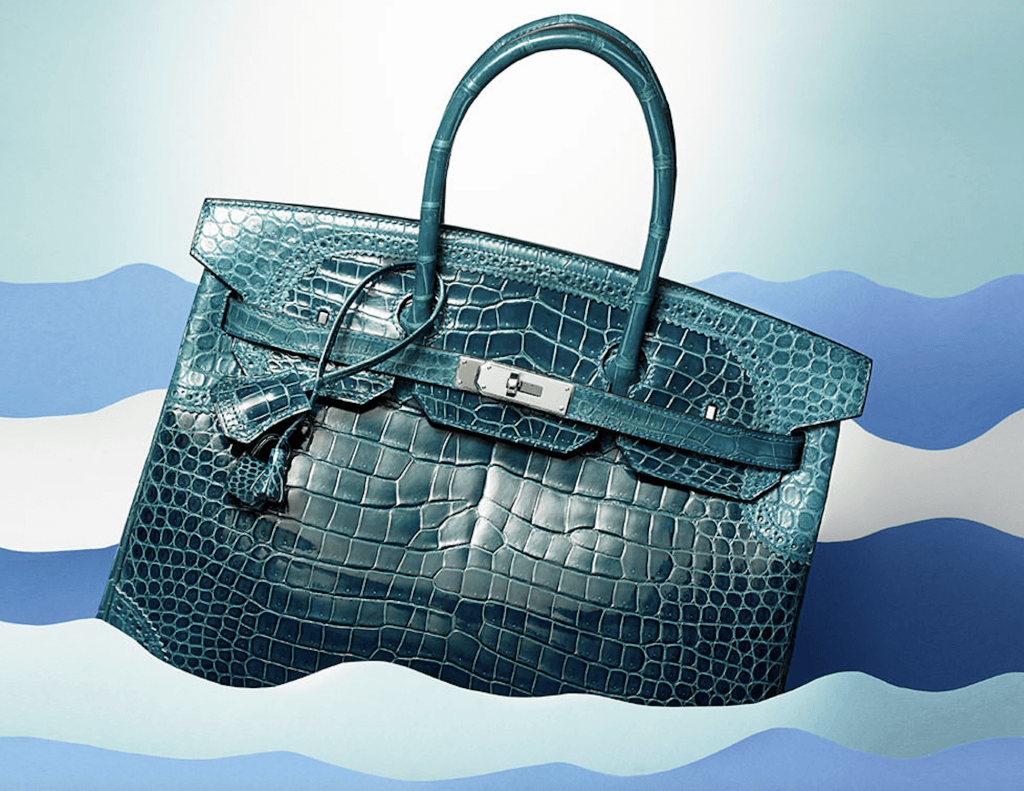Auction houses like Christie’s and Sotheby’s have garnered attention throughout the COVID-19 pandemic as they have successfully doubled-down on their pre-existing efforts to diversify their offerings – adding hyped sneakers and coveted streetwear, as well as rare watches and Hermès handbags – to their increasingly-digital auction blocks, which have traditionally consisted of in-person events and bids for more traditional works of art. As the New York Times reported in November, “In a process fast-forwarded by the coronavirus pandemic, technology is transforming these venerable names into very different-looking businesses,” as auction titans continue to move more events online, and as personal luxury goods are increasingly being brought into the fold.
In a nod to the developing nature of the space, which has seemingly only thrived during the pandemic, the Times’ Scott Reyburn wrote late last year that Christie’s – the 255-year-old British auction house that is now “owned by the French billionaire art collector François Pinault, who also founded the luxury goods group Kering” – first introduced “online-only sales of designer handbags in 2012.” Fast forward five years and not only did “Handbags & Accessories” have their own category, they transitioned from an online-only experiment to a record-breaking segment, with “a white crocodile Hermès Birkin selling at a live Christie’s auction in Hong Kong for a record $380,000.”
Since then, demand for these “alternative” assets has abounded. “The pandemic has made internet-based fashion auctions more popular than ever,” the South China Morning Post (“SCMP”) revealed this week, and handbags have “remained the most popular fashion item to buy and sell at auction.” The media outlet’s report echoes one of the findings from the annual “Wealth Report” that Knight Frank released in March, which found that “an established online auction presence and the appetite for relatively affordable luxury pick-me-ups during the Covid-19 pandemic helped the [handbags] asset class retain pole position.”
According to Knight Frank, such enduring demand to park money in assets like personal luxury goods, which boast a well-established resale value, has prompted demand in the handbag class soar, and prices to grow by almost 20 percent in 2020, alone, and by 108 percent over the past decade. By Knight Frank’s findings, those figures put handbags ahead of fine wine, classics cars, and watches, among other assets on the Luxury Investment Index, the consultancy’s running system that tracks the performance of a group of selected collectable asset classes.
In addition to general rise in demand for digitally-auctioned luxury goods, SCMP notes that sales in Asia are driving much of the auction momentum, stating that in 2020, “The number of Chinese clients bidding online for luxury fashion tripled.” Knight Frank similarly pin-pointed the Asian region as a hotbed for sales of investment-grade handbags at auction. And in line with an already-established trend in the luxury space, the buyers are getting younger. (As we reported a few years ago, Chinese natives born in 1998 and after have been demonstrating remarkable spending power, in some cases, shelling out more than $7,000 per year for luxury goods even before they reach age 21, which is substantially more than their Western counterparts.) Citing one example, SCMP states that a December 2020 Christie’s Hong Kong auction set a new world record for a handbag when an Hermès Himalaya Kelly sold for $437,330. The buyer? “A young Chinese client.”
As auction houses continue to cater to online-natives and/or e-commerce-centric consumers, with Christie’s currently hosting a Luxury Week, complete with an online “Jewels and Handbags” auction “led by an Hermès 2016 Rose Sakura Swift leather Birkin with gold hardware, tripling its pre-sale estimate to make CHF 22,500” ($24,899), they are not necessarily shunning their roots. In fact, in at least some cases, are hoping that these “entry-level” offerings – whether they be Birkin bags or hard-to-get Nikes – open the door to bigger-item offers.
“Fine art is what Sotheby’s is best known for, and that’s not going to change,” Josh Pullan, the managing director of Sotheby’s global luxury division, told the Times. As the push towards mostly-digital auctions of alterative assets like bags and shoes (aside from a purely revenue-generation standpoint), the rationale is this: “If a new client can afford to pay $10,000 for a pre-owned luxury item such as a handbag, they might eventually gain the confidence to spend $100,000 or even $1 million at an art auction, where these centuries-old companies have always made their biggest, brand-enhancing sales.” Sound familiar? Luxury brands have been playing this game – albeit in a far less expensive scale – for years, initially hooking consumers with small, often logo-adorned, leather goods and other more-affordable accessories, in hopes of ultimately selling them bigger-ticket items. And judging by their bottom lines and consistent growth, it is a successful strategy.













